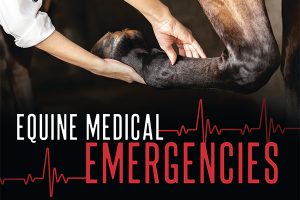Equine Medical Emergencies
Click here to read the complete article
402 – July/August, 2025
If you have owned a horse long enough, you have encountered at least one medical emergency. If not, you very likely will.
There are three behavioral traits of horses that significantly contribute to this. The first, they possess an instinctive fight-or-flight response. Since horses are herd animals, they have a need to establish a dominance hierarchy. The desire to set a pecking order is the second reason. And, the third is, horses have a natural curiosity. Because of these three things, their behavior accounts for many of the cuts, bruises, bumps, and abrasions that horses experience.
There are, of course, a wide variety of emergencies such as colic, sudden onset lameness, illness, and foaling difficulties that an owner could expect. Lacerations, however, are quite likely the single most common emergency owners and vets have to deal with. As an owner, we must know how to recognize serious problems and know how to respond promptly. Taking appropriate action while waiting for our veterinarian to arrive can be a critical key to a successful outcome.
Recognizing signs of distress
It is pretty obvious that we have a problem when we see that our horse is cut and bleeding. However, as is the case with some illness, colic, or a more subtle injury, it may not be as readily apparent. That is why it is so very important for us to know our horse’s normal vital signs.
This includes temperature, pulse, and respiration rates, as well as their normal patterns of behavior. We must also be constantly on the lookout for any sign of distress or ill health.
Knowing what is normal
Click here to read the complete article
402 – July/August, 2025











